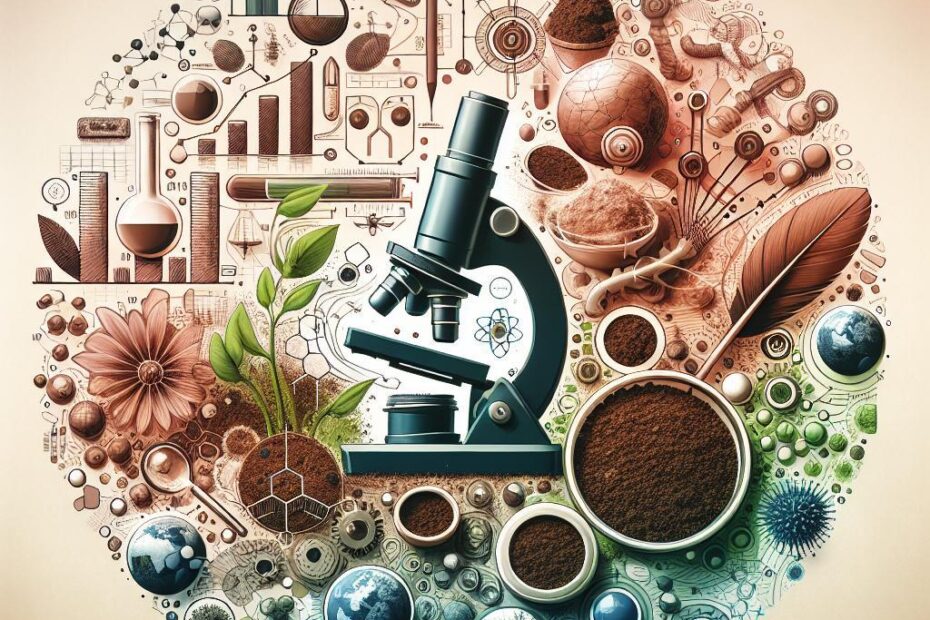Unveiling the Hidden World of Soil Under a Microscope
Have you ever wondered what lies beneath the surface of the soil in your backyard or garden? The soil is teeming with life, from tiny microbes to intricate root systems of plants. One of the best ways to explore this hidden world is by observing soil under a microscope.
In this article, we will delve into the fascinating realm of soil microorganisms and explore the benefits of examining soil samples under a microscope. From identifying beneficial microbes to diagnosing soil health issues, the information revealed through microscopic analysis can offer valuable insights for gardeners, farmers, and researchers alike.
Understanding Soil Microorganisms
Soil is home to a diverse array of microorganisms, including bacteria, fungi, protozoa, and nematodes. These tiny organisms play crucial roles in nutrient cycling, decomposition, and plant growth. By examining soil samples under a microscope, researchers can gain a deeper understanding of the microbial communities present in the soil.
Types of Soil Microorganisms
- Bacteria: These single-celled organisms are essential for breaking down organic matter and releasing nutrients for plants.
- Fungi: Fungi form complex networks called mycelium, which help decompose organic matter and form symbiotic relationships with plant roots.
- Protozoa: These microscopic organisms feed on bacteria and fungi, playing a key role in nutrient cycling.
- Nematodes: Nematodes are tiny worms that can be either beneficial or harmful to plants, depending on their feeding habits.
Benefits of Examining Soil Under a Microscope
1. Identifying Beneficial Microbes
By observing soil samples under a microscope, researchers can identify beneficial microbes that promote plant health and soil fertility. For example, mycorrhizal fungi form symbiotic relationships with plant roots, aiding in nutrient uptake and plant growth.
2. Diagnosing Soil Health Issues
Microscopic analysis of soil can reveal signs of soil compaction, poor drainage, or nutrient deficiencies. By identifying these issues early on, gardeners and farmers can take remedial actions to improve soil health and productivity.
3. Monitoring Changes in Soil Microbiome
Regular microscopic analysis of soil samples can help track changes in the soil microbiome over time. This information can be valuable for assessing the impact of farming practices, soil amendments, or environmental factors on soil health.
Practical Tips for Examining Soil Under a Microscope
- Collecting Soil Samples: Use a clean container to collect soil samples from different areas of your garden or farm.
- Preparing Soil Slides: Mix a small amount of soil with water on a glass slide and cover it with a coverslip for microscopic observation.
- Using a Microscope: Adjust the magnification and focus of the microscope to observe soil particles, microorganisms, and root structures.
Case Study: Soil Health Assessment in Organic Farming
A recent study conducted on an organic farm used microscopic analysis of soil samples to assess soil health and microbial diversity. By comparing samples from different fields, researchers were able to identify differences in soil microbiome composition and nutrient cycling processes.
First-Hand Experience: Exploring the Soil Microbiome
As a gardener, I have always been fascinated by the intricate world of soil microorganisms. By examining soil samples under a microscope, I have gained a deeper appreciation for the hidden diversity of life beneath the surface. It has helped me make informed decisions about soil amendments, composting practices, and plant care in my garden.
Conclusion
Examining soil under a microscope can reveal a wealth of information about the hidden world of soil microorganisms. From identifying beneficial microbes to diagnosing soil health issues, microscopic analysis offers valuable insights for improving soil fertility and plant growth. By incorporating regular soil microbe analysis into your gardening or farming practices, you can promote a healthy soil ecosystem and enhance overall soil quality. So grab a microscope and start exploring the fascinating realm of soil microorganisms today!
